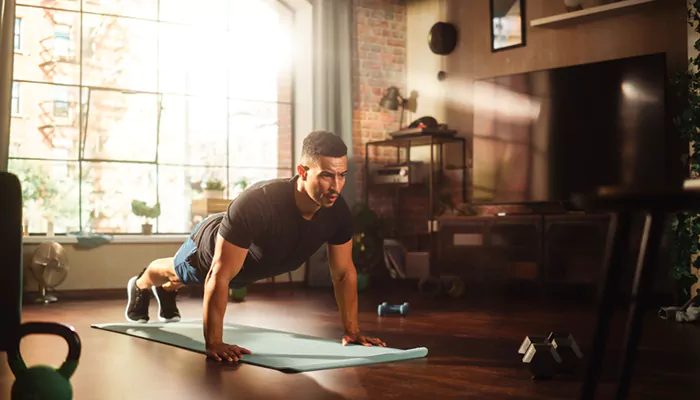
Pushing yourself for learning how to perform pushups will take time, but so worth it
If you're not feeling too confident about push-ups, you're not alone. They can be tough! But with some focused practice and determination, you can definitely get better at them. Push-ups are great for strengthening your upper body muscles like your chest, triceps, and shoulders, as well as improving core stability. Plus, you can do them anywhere without any equipment, which is super convenient. And let's not forget, being able to nail a set of push-ups feels pretty awesome!
So, how do you go from struggling with push-ups to owning them? It's all about taking it step by step and starting with easier versions of the exercise. This way, you'll build up the strength and technique you need to tackle the full push-up like a champ.

Proper push-up technique
Starting Position
Begin in a plank position with your hands slightly wider than your shoulders. Your hands should be pointing forward, and your body should form a straight line from head to heels, with your feet hip-width apart. Engage your core and legs to maintain stability.
Lowering Phase: Lower your body by bending your elbows while keeping them close to your sides. Go at your own pace, and don't worry if your arms shake initially. Focus on maintaining a straight and neutral neck and body throughout the movement.
Pushing Phase: Push yourself back up using your arms, core, legs, and glutes. Avoid locking your arms at the top of the movement to prevent injury and strain.
Consistency is Key: Practice consistently to improve your push-up technique and build strength. If you find it challenging to keep both your arms and legs in a plank position, start by modifying the push-up with your knees on the ground.
Engage Your Core: Keep your core engaged throughout the exercise to prevent collapsing and maintain stability. This will also help avoid arching your back excessively, which can strain your lower back.
Gradually Increase Reps: Work on gradually increasing the number of push-ups you can do while maintaining proper form. Set achievable goals and track your progress over time.
There are beginner friendly push-up variations that can help strengthen muscles before you can attempt and succeed in a full push up. Each progression mentioned below plays a crucial role in improving your push-up skills by gradually building strength, improving technique, and increasing familiarity with the movement pattern. Here's how each step contributes to mastering the push-up.
Hands-Elevated Push-Up
This variation serves as a beginner-friendly introduction to the push-up movement. By starting with your hands on a raised surface, such as a low box, chair, or table, you reduce the amount of weight your upper body has to lift. This allows you to focus on proper form while gradually building strength in your chest, shoulders, and arms. Additionally, it helps acclimate your body to the mechanics of the push-up motion without the challenge of supporting your full body weight.
Knees-Down Push-Up
As you progress from the hands-elevated push-up, transitioning to the knees-down variation further reduces the load on your upper body. By resting your knees on the ground, you decrease the resistance faced by your chest, shoulders, and triceps, making it easier to maintain proper form and complete the movement. This modification allows you to continue building strength while gradually adapting to the full range of motion required for a standard push-up.
Concentric Push-Up
The concentric push-up variation focuses on the lifting phase of the exercise, emphasizing the action of pushing your body away from the floor. By performing the concentric (upward) portion of the movement from a full plank position and then lowering to your knees for the eccentric (downward) phase, you isolate and strengthen the muscles responsible for pushing. This variation helps develop the specific strength needed to execute the push-up with control and stability.












